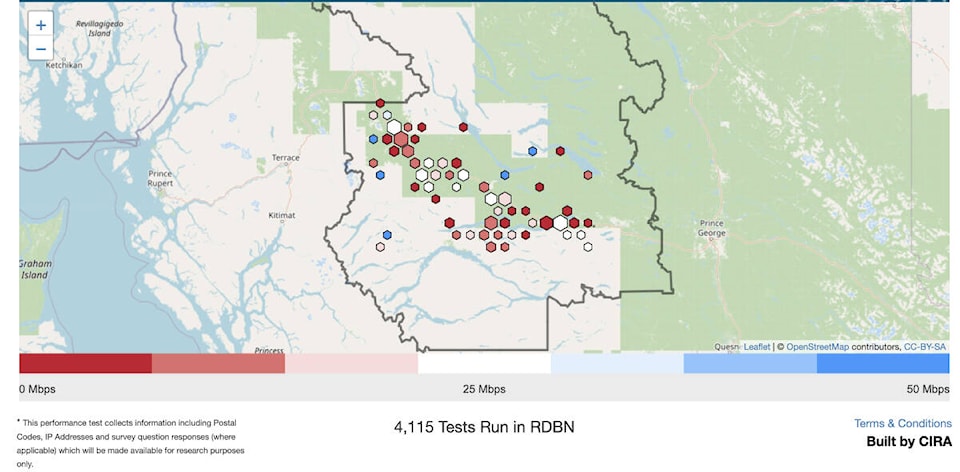The Regional District of Bulkley Nechako (RDBN) will participate in a study of Canadians’ internet service performance launched by the Canadian Radio-television and Telecommunications Commission (CRTC).
Last month, a letter was sent out to Internet Service Providers (ISPs) by the secretary general of CRTC, Marc Morin.
Morin is asking the ISPs to encourage their customers to participate in the Measuring Broadband Canada Phase 3 study of fixed wireless internet services.
An earlier press release on Nov. 6 indicated that CRTC aims to provide affordable internet services to more than five million Canadian households by using this study.
The CRTC’s plans to provide LTE [4G or 5G cellular internet], broadband speeds of at least 50 Mbps download and 10 Mbps upload, and access to unlimited data these households and the study will make it possbile.
The Broadband Committee of RDBN carried an internet performance test with the help of Canadian Internet Registration Authority (CIRA) on 4,115 connections. The test result showed that over 90 percent of internet service in the Bulkley Nechako region lies under 25 Mbps [less than CRTC’s goal].
Director and Chairperson Michael Riis-Christianson of RDBN’s Connectivity Committee acknowledged the value of this study which can build network and relationships with other communities and ISPs.
He said the current internet activity level in rural Canada is 60 per cent, and the Indigenous communities are even lower, which is 43 per cent.
Riis-Christianson is amazed how Electoral Area E [Francois/Ootsa Lake Rural] manages their internet service coverage. He said they use TV Whitespace (TVWS) [television channels providing internet]. The TV Whitespace mainly uses low-frequency signals and unused space between active television channels in the UHF and VHF spectrum to convert into the internet.
Riis-Christianson said that TVWS is not a new technology and has been around for a long time. He also said other countries like South Africa, Ghana, and Southeast Asia use it since it’s reasonably cheap and everyone gets internet service for free.
Riis-Christianson added that 6Harmonics [rural and remote UHF broadband wireless connectivity service provider] can provide such technology and Canada needs to pay more attention to what other countries already use.
“It is possible to reach far more phones and wireless devices through this technology.”
He added that the only downside to this technology is that it lacks internet speed, that a Telus hub can easily provide.
“The interesting thing is Southern Saskatchewan and Ontario have taken a different approach. They have called to purchase 10,000 satellite units to provide as an interim measure until it is feasible for northern rural communities to provide access to direct internet service.”



